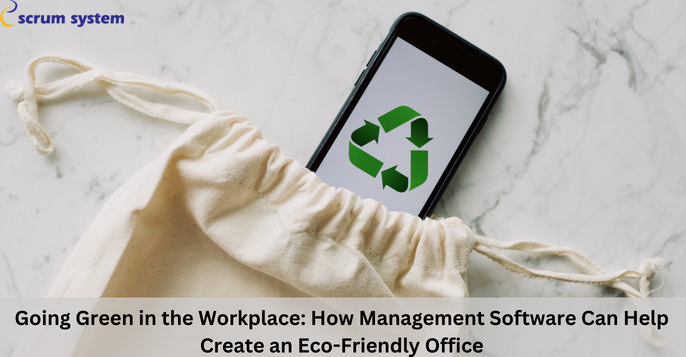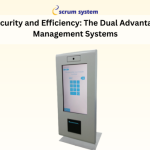In today’s fast-paced business landscape, sustainability is no longer just a buzzword—it’s a necessity. As concerns about environmental conservation continue to rise, organisations around the world are taking proactive steps to reduce their carbon footprint and embrace eco-friendly practices. One powerful approach to achieving eco-friendliness in the workplace is through the use of management software. In this comprehensive guide, we’ll explore how various management software solutions, including visitor management systems, labour management systems, assembly point software, and safety kiosks, can play a pivotal role in making your office eco-friendly.
The Environmental Imperative
Before we dive into the ways management software can promote eco-friendliness, it’s essential to understand the environmental challenges that businesses face today. These challenges not only impact the planet but can also have significant implications for a company’s reputation and bottom line.
High Energy Consumption
Energy consumption is a major contributor to an organisation’s carbon footprint. Many offices consume substantial amounts of energy for lighting, heating, cooling, and running electronic devices. Reducing energy usage is not only environmentally responsible but also helps cut down on operational costs.
Excessive Paper Usage
The traditional office environment often relies heavily on paper for various processes, from documentation and communication to record-keeping. Excessive paper usage not only leads to deforestation but also results in a significant environmental impact due to resource-intensive paper production and waste generation.
Inefficient Resource Allocation
Inefficient resource allocation can lead to unnecessary waste and higher energy consumption. This includes practices such as overusing office supplies, overstaffing, and poor scheduling that keeps the office open longer than necessary.
The Role of Management Software
Management software, designed to streamline and optimise various office processes, has traditionally focused on improving efficiency, reducing costs, and enhancing productivity. However, these software solutions can also play a vital role in addressing environmental concerns. Let’s explore how each of these management software solutions contributes to eco-friendly office management:
1. Visitor Management System
Reducing Paper Usage: One of the most visible changes brought about by the visitor management system is the elimination of traditional paper sign-in sheets. Instead of manually recording visitor details on paper, these systems offer a digital alternative where visitors can register and check in electronically. This significantly reduces paper waste and the associated environmental impact.
Energy Efficiency: Beyond paper reduction, visitor management software automates the check-in process. Visitors can use self-service kiosks or mobile apps to check in, reducing the need for manual data entry by staff. This not only saves time but also reduces energy consumption related to data input and archiving.Visitor management systems not only enhance security and efficiency but also promote a paperless and energy-efficient approach to office management.
2. Labor Management System
Optimised Scheduling: The primary function of Labour Management System is to create optimised employee schedules. By factoring in variables like workloads, employee availability, and demand forecasting, these systems help businesses reduce overtime and prevent overstaffing. This efficient allocation of labour resources not only saves costs but also reduces the energy consumption associated with extended office hours.
Remote Work Enablement: The modern workplace is evolving, and remote work is becoming increasingly common. Contract Labour Management System facilitates remote work arrangements by providing tools for efficient remote workforce management. This reduces the carbon emissions associated with daily commutes to the office, contributing to a greener office environment.
3. Assembly Point Software
Efficient Evacuation: In the event of an emergency, the safety and well-being of employees are of paramount importance. Emergency assembly point streamlines the emergency evacuation process by providing clear instructions and guidance on where employees should gather during evacuations. This ensures that employees reach designated assembly points swiftly and safely, minimising confusion and the risk of accidents.
Resource Conservation: Effective management of safety assembly point during emergencies ensures the efficient use of resources such as safety personnel and emergency equipment. By minimising the chaos and ensuring a structured response, assembly point software can reduce the consumption of emergency resources, contributing to a more sustainable approach to safety management.
4. Safety Kiosk
Paperless Training: Safety training kiosk provide a digital platform for safety training and communication. Instead of relying on printed training materials, employees can access training modules, documents, and safety guidelines digitally. This eliminates the need for printed materials and reduces paper waste, making the training process more environmentally friendly.
Progress Tracking: Safety kiosks offer the capability to track employee training progress and compliance digitally. This means that employees who have completed training requirements do not need to undergo the same training again, reducing the need for repeated training sessions and resource consumption.
By utilising these management software solutions, organisations can not only improve operational efficiency but also contribute to a more eco-friendly office environment.
The Advantages of Going Eco-Friendly
Embracing eco-friendly office management practices through the implementation of management software offers numerous advantages:
1. Cost Savings
Reduced energy consumption, paper usage, and optimised resource allocation often translate into significant cost savings for businesses. As operational expenses decrease, organisations can allocate resources to other strategic initiatives or investments.
2. Enhanced Reputation
In an era when environmental awareness is on the rise, companies that prioritise sustainability tend to enjoy a better corporate reputation. Such a reputation can attract environmentally conscious customers and partners, opening up new business opportunities and collaborations.
3. Compliance
Many regions and industries have stringent environmental regulations and standards. By adopting eco-friendly practices, businesses are more likely to meet these requirements and avoid potential fines or legal issues.
4. Employee Engagement
Employees are often more satisfied and engaged when working for a company that prioritises sustainability. Knowing that their workplace is committed to reducing its environmental impact can boost employee morale and foster a sense of pride in their organisation.
Conclusion
Incorporating eco-friendly office management practices, with the assistance of management software such as visitor management systems, labour management systems, assembly point software, and safety kiosks, is a win-win strategy. Not only does it benefit your business through cost savings and an improved reputation, but it also contributes positively to the environment.
Scrum system has a range of management systems that will encourage organisations to become eco friendly. It consists of Smart Assembly point, VisiteX Touch Visitor Management System, Safety Training Kiosk and many more that includes all the benefits discussed in the blog. With climate change and uncertain times rising, it’s necessary to go green.
As organisations strive to reduce their carbon footprint and embrace sustainability, implementing these management software solutions becomes a clear and logical step forward. Start your eco-friendly journey today and make a substantial impact on your workplace and the world. By optimising your office operations and reducing your environmental impact, you can create a healthier, more sustainable future for your organisation and our planet.



